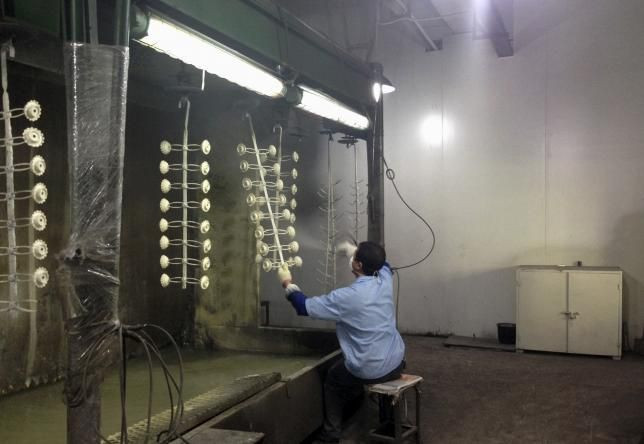China April Factory Output, Investment, Retail Sales All Miss Forecasts, More Easing Seen

China's factory output rose 5.9 percent in April compared with the same period last year, slightly below forecasts and reinforcing expectations that the government will have to step up its efforts to boost the cooling economy.
A weak reading had been expected after the central bank cut interest rates early this week for the third time in six months to lower companies' borrowing costs and boost activity as the economy heads for its worst year in a quarter of a century.
Analysts polled by Reuters had forecast a 6.0 percent rise, up from 5.6 percent in March, which was the weakest reading since the global financial crisis.
Fixed-asset investment, a crucial driver of the world's second-largest economy, rose 12 percent in January-April from the same period a year ago, the slowest pace since December 2000, the National Bureau of Statistics showed on Wednesday.
Economists had expected a 13.5 percent gain, the same as in the first quarter of the year.
A breakdown of fixed-asset investment showed slower growth in both government and private sector spending, and a sharp drop in the metal mining sector. Overall spending on new projects stalled.
Retail sales, meanwhile, rose 10 percent last month, missing expectations for a 10.5 percent rise and easing from March.
Data last week showed weaker-than-expected exports, imports and inflation, highlighting that China's economy is under persistent pressure from soft demand at home and abroad.
The economy grew 7 percent in the first quarter of this year, the slowest pace in six years, and the April data suggest the world's second-largest economy lost more momentum heading into the second quarter, intensifying the challenge for Beijing to find the right policy mix to shore up activity.
China's economic growth was within "a reasonable range" in April, but the government still needed to work hard to keep growth steady going forward, the National Bureau of Statistics said on Tuesday.
In addition to cutting interest rates, the central bank has also lowered banks' reserve requirement ratio (RRR) twice this year to spur bank lending and economic growth, and relaxed restrictions on home purchases to shore up the ailing property market, which accounts for about 15 percent of the economy.
Analysts expect policymakers to deliver more cuts in interest rates and RRR in the coming months. Policy insiders told Reuters earlier this month that the government may also ramp up state spending to shore up growth.
© Copyright IBTimes 2025. All rights reserved.



















